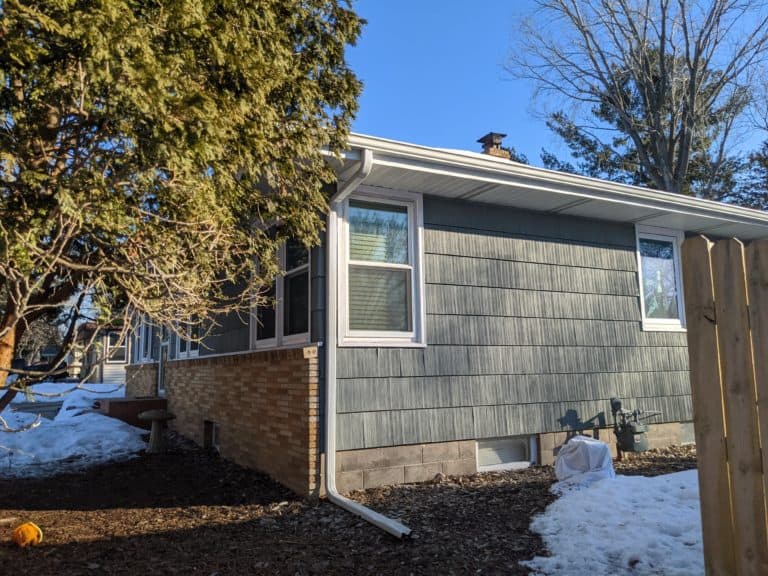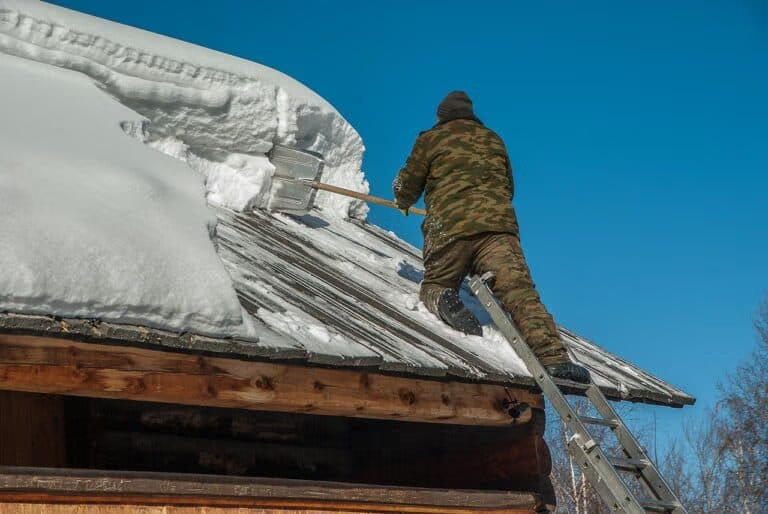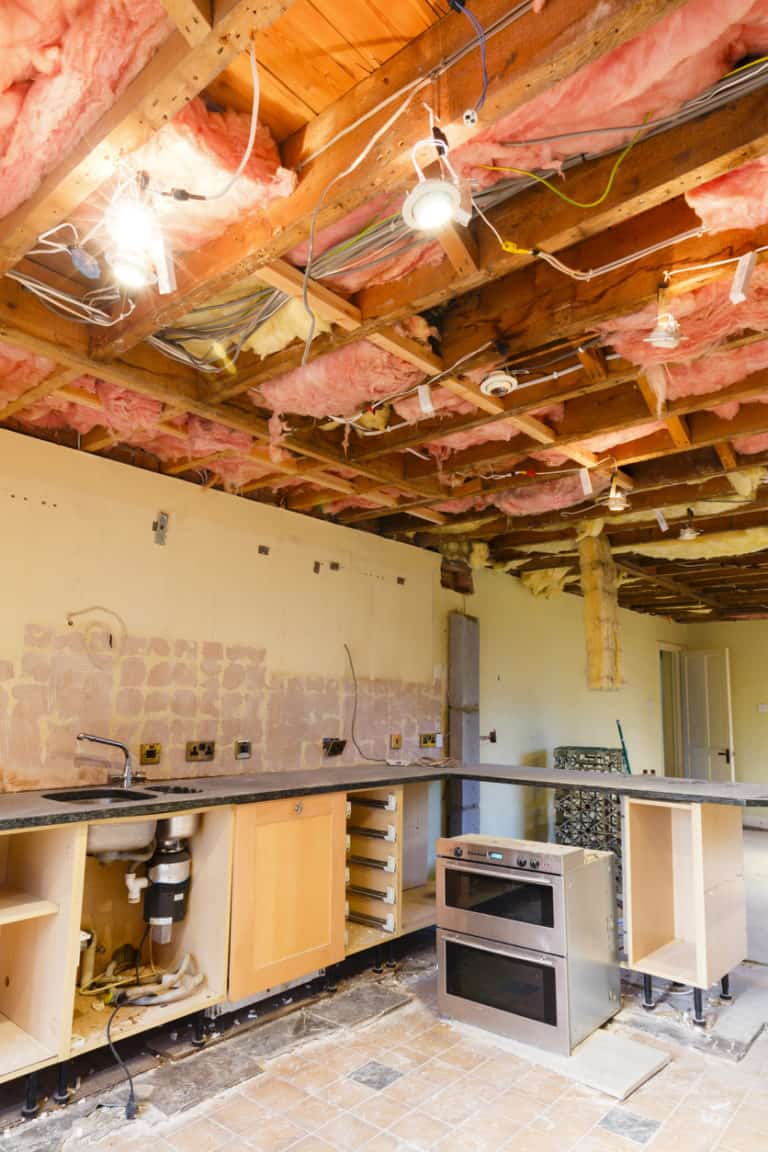Comprehensive Table of ContentsTable Of Contents:
- Secrets to an Effective Flat Roof Maintenance Plan
- Understanding the Importance of a Maintenance Plan for Flat Roofs
- Key Components of a Successful Flat Roof Maintenance Schedule
- Seasonal Flat Roof Maintenance Tasks
- Working With Professionals for Your Maintenance Plan
- DIY Maintenance Techniques for Homeowners
- Tracking and Optimizing Your Flat Roof Maintenance Schedule
- Conclusion
Secrets to an Effective Flat Roof Maintenance Plan
Many property owners underestimate the importance of a maintenance plan for their commercial flat roof. Regular inspections can prevent issues like blisters and deck damage before they escalate. In this post, I will outline essential components of a successful maintenance schedule, seasonal tasks to prioritize, and DIY techniques homeowners can implement. By following these strategies, you can protect your investment and extend the lifespan of your roof, ensuring it remains in optimal condition for years to come. Let’s tackle this common challenge and safeguard your flat roofing investment.
Understanding the Importance of a Maintenance Plan for Flat Roofs
A maintenance plan for flat roofs is essential to prevent wear, address common issues, and minimize water damage. Regular inspections help to catch problems early and ensure that all components, including metal fixtures, withstand various climates. This proactive approach leads to significant long-term cost savings and enhances the roof’s overall durability, allowing you to protect your investment effectively.
Benefits of Regular Maintenance
Regular maintenance of flat roofs is crucial to extend the roof‘s lifespan and protect your investment from potential damage. By adhering to a maintenance plan, you can address wear and tear before it escalates into more significant issues, such as leaks caused by fallen leaves or debris. Additionally, a well-maintained roof not only supports waterproofing efforts but also upholds any warranty associated with the roofing materials, safeguarding you from unexpected repair costs.
During routine inspections, specific materials like EPDM rubber can be evaluated for their integrity. Addressing minor issues proactively ensures the roof remains functional and helps identify problems, such as punctures or seam failures, that could compromise waterproofing. Establishing a regular maintenance routine means you can enjoy peace of mind, knowing that your flat roof remains in optimal condition while effectively guarding against possible water damage.
| Benefits of Regular Maintenance | Impact on Flat Roof |
|---|---|
| Extends Lifespan | Reduces frequency of full replacements |
| Prevents Water Damage | Maintains waterproofing integrity |
| Upholds Warranty | Protects against unexpected costs |
| Addresses Minor Issues | Minimizes wear and tear impacts |
| Improves Performance | Ensures reliable functionality with EPDM rubber |
Common Issues Prevented by a Maintenance Schedule
Implementing a regular maintenance schedule is essential for preventing issues like cracks and sealant failure on flat roofs. For instance, frequent inspections can help identify areas where the caulk has worn away near fixtures such as chimneys, allowing for timely reapplication. This proactive approach mitigates the risk of water infiltration, especially in commercial roofing applications where leaks can lead to significant damage over time.
Another common issue addressed by maintenance is the degradation caused by ultraviolet exposure. Without regular coatings or protective measures, roofing materials can become brittle and less effective. By incorporating proper maintenance routines, I ensure that these protective coatings are reapplied as needed, which helps preserve the integrity and functionality of the roof, significantly extending its lifespan.
Long-Term Cost Savings Through Preventative Care
When I set up a flat roof maintenance schedule, I focus on preventative care that leads to significant long-term cost savings. Regular inspections and prompt repair of minor issues, such as leaks or algae growth, can prevent them from escalating into larger problems that demand costly repairs or replacements. For example, if I notice deterioration in the fiberglassmembrane early on, I can address it before it compromises the entire roof system, saving substantial expenses down the road.
By consistently giving attention to maintenance tasks, I help extend the lifespan of the roofing materials and maintain their effectiveness. Protecting against algae growth and sealing any potential leak points ensures the integrity of the roof, which can help avoid emergency repairs that disrupt business operations. Ultimately, investing time in a flat roof maintenance strategy today translates into reduced financial burdens tomorrow, making it a wise approach for anyone looking to safeguard their property.
Key Components of a Successful Flat Roof Maintenance Schedule
To ensure the longevity and effectiveness of a flat roof, I focus on several key components in my maintenance schedule. Regular inspections help identify signs of mold or potential water infiltration, while established cleaning routines preserve the roof‘s integrity by removing debris and ensuring proper drainage. I prioritize addressing minor repairs promptly, preventing issues that could escalate and affect associated ceilings. Lastly, documenting all maintenance activities provides valuable reference points for future care and management.
Inspections: Frequency and What to Look For
In my experience managing flat roofs, I recommend conducting inspections at least twice a year, ideally during the spring and fall. This frequency allows me to identify problems like moisture accumulation or signs of leaks early on, before they escalate and lead to costly commercial roof repairs. During these inspections, I pay particular attention to areas vulnerable to wind damage and the integrity of seams and flashing, as they are often the culprits in leaking situations.
Throughout the inspection process, I also check for any debris buildup, which can hinder proper drainage and cause water pooling. It’s vital to look for signs of wear on roofing materials, including cracks or blistering, as these can indicate underlying issues that could allow moisture to penetrate the roof structure. Addressing these concerns promptly ensures the longevity and reliability of the roof, safeguarding my clients’ investments effectively:
| Inspection Focus Areas | Potential Issues |
|---|---|
| Seams and Flashing | Risk of leaks and moisture entry |
| Debris Accumulation | Water pooling and drainage issues |
| Material Wear | Cracks or blistering indicating damage |
| Wind Damage | Potential failure of roof components |
Cleaning Routines to Preserve Roof Integrity
As a roofing professional, I emphasize the significance of regular cleaning routines to maintain the integrity of flat roofs. Owners should ensure that accumulated debris, such as leaves or dirt, is removed regularly, especially after severe weather or snowfall. This proactive measure helps prevent water pooling, which can lead to damage and compromised membrane integrity, particularly around critical areas like roof penetrations.
Additionally, I recommend incorporating a quarterly cleaning schedule tailored to the specific needs of the roof. This includes inspecting and clearing gutters, downspouts, and drainage areas to ensure proper water flow and reduce the risk of leaks. By staying ahead of cleaning tasks, owners can protect their flat roofs from more extensive repairs and ensure their long-term performance:
| Cleaning Routine | Benefits |
|---|---|
| Regular Debris Removal | Prevents water pooling |
| Quarterly Cleaning Schedule | Maintains roof performance |
| Inspect and Clear Gutters | Reduces risk of leaks |
| Address Drainage Areas | Ensures proper water flow |
Addressing Minor Repairs Before They Escalate
Addressing minor repairs on flat roofs is critical to prevent larger issues from developing, especially when considering materials such as thermoplastic olefin. I often encounter small leaks around pipe penetrations that, if neglected, can exacerbate damage during extreme weather. Taking action promptly can save both time and money by avoiding the need for extensive repairs later.
In my experience, regular maintenance checks allow me to spot and resolve minor concerns like seam wear or cracks early on. For example, I tend to prioritize thermoplastic sections during inspections, ensuring that any small tears are fixed before they compromise the roof’s integrity. Staying proactive in this area makes a significant difference; it matters how quickly repairs are addressed to maintain a reliable flat roof system.
- Regular inspections identify small issues early.
- Patching minor leaks prevents severe damage from extreme weather.
- Thermoplastic materials, like thermoplastic olefin, require special attention during maintenance.
- Timely repairs save costs and extend the roof‘s lifespan.
Documenting Maintenance Activities for Future Reference
Documenting maintenance activities is a crucial part of my flat roof maintenance plan. I maintain a detailed checklist noting inspections, repairs made, and any vegetation or debris removal performed. This record not only tracks the history of maintenance tasks but also highlights common issues like ponding and ensures timely attention to areas, such as flashing, that might require special care in the future.
By keeping thorough documentation, I can spot trends over time, allowing for more informed decision-making regarding repairs and maintenance. For instance, if I notice frequent issues with a particular section of the roof, it helps me focus on preventative measures during my next maintenance visit. I invite clients to reach out for a free quote on our comprehensive maintenance plans, knowing that a strong documentation strategy supports long-term roof health and minimizes potential problems.
Seasonal Flat Roof Maintenance Tasks
In spring and summer, I focus on activities such as inspecting sealants and clearing downspouts to ensure optimal water drainage. Preparing your roof for autumn and winter involves addressing seasonal weather challenges, including potential storm impacts and ensuring proper ventilation. Each of these tasks is vital for maintaining flat roof integrity, preventing issues like flat roof bubble repair and safeguarding against harsh conditions.
Spring and Summer Maintenance Activities
In the spring and summer months, I prioritize a detailed maintenance schedule to address potential corrosion issues, particularly around metal roofs where exposure to moisture can lead to accelerated deterioration. I inspect metal panels and flashing for any signs of rust or damage and ensure protective coatings are intact to enhance longevity. This proactive approach not only prevents further damage but also safeguards the entire roofing system, which includes any roof shingles that might be part of your structure.
During these seasons, I focus on ensuring proper drainage around all roofing components to avoid pooling water, which can lead to significant repair costs. I also check gutters and downspouts thoroughly, clearing any debris that might obstruct water flow. Maintaining these aspects is critical for preserving the overall integrity of your roof and extending its lifespan:
- Inspect metal components for corrosion and damage.
- Ensure protective coatings are applied where needed.
- Check and clear gutters and downspouts.
- Monitor for water pooling around roof structures.
- Assess the condition of roof shingles, if applicable.
Preparing Your Roof for Autumn and Winter
As autumn approaches, I focus on specific tasks to prepare flat roofs for winter conditions. I pay close attention to cleaning out any accumulated debris, such as leaves and moss, that could block drainage systems and lead to water pooling. Additionally, I assess the condition of bitumen and other roofing materials, ensuring they are intact and properly sealed to manage moisture and prevent leaks during harsh weather.
In winter preparation, I also prioritize inspecting insulation to maximize energy efficiency. A well-maintained flat roof helps regulate indoor temperatures during colder months, reducing heating costs. By handling these tasks ahead of time, I can help my clients avoid the pitfalls of neglect, ensuring reliable performance throughout the season:
- Clear debris like leaves and moss.
- Inspect and repair bitumen and roofing materials.
- Ensure proper drainage systems are functioning.
- Assess insulation for optimal energy efficiency.
Addressing Seasonal Weather Challenges
As a roofer, I often encounter the challenges presented by seasonal weather shifts, particularly during hailstorms. When I assess flat roofs equipped with skylights, I focus on identifying any potential damage caused by hail impact. This means checking for dents or cracks around the skylight frames, where water could infiltrate if left unrepaired. Implementing protective measures, such as installing a gravel layer, can help deflect hail and reduce the risk of damage, ensuring that the roof remains watertight.
Moreover, I pay close attention to the condition of materials like polyvinyl chloride, especially during the transition from winter to spring. Snow and ice accumulation can lead to pooling water, which might compromise the integrity of the roofing system. To address this issue, I make sure to clear gutters and drainage areas thoroughly, reducing any risk of leaks and prolonging the lifespan of the roofing materials. Being proactive in these maintenance efforts can save you from significant repair costs down the road:
- Inspect skylights for hail damage.
- Install gravel to minimize hail impact.
- Clear gutters and drainage areas regularly.
- Check polyvinyl chloride for wear and tear.
Working With Professionals for Your Maintenance Plan
Knowing when to hire experts is essential for maintaining your flat roof effectively. I evaluate contractor qualifications by reviewing their experience with commercial roof systems, ensuring they have the necessary skills and licenses. Additionally, understanding the details of maintenance agreements helps guarantee that you receive comprehensive services tailored to your needs. Each of these topics plays a crucial role in optimizing your flat roof‘s longevity and performance.
Knowing When to Hire Experts
Recognizing when to hire professionals for flat roof maintenance is essential for effective property management. In my experience, if you encounter persistent leaks, visible wear, or unusual growths, it’s wise to consult with a qualified roofing contractor. Expert assessment not only identifies underlying issues but ensures proper repairs that protect the integrity of your roof and extend its lifespan.
Additionally, if your maintenance schedule includes tasks beyond routine inspections or cleaning, such as major repairs or specialized applications like protective coatings, consider bringing in an expert. Professional roofers bring specialized knowledge and tools to address complex issues, ensuring that your flat roof functions optimally. This approach not only safeguards your investment but also enhances the overall value of your property:
| Signs to Hire Experts | Recommended Action |
|---|---|
| Persistent Leaks | Consult a professional for inspection and repair |
| Visible Wear | Seek expert assessment for necessary maintenance |
| Specialized Applications | Hire a contractor for major repairs and treatments |
Evaluating Contractor Qualifications
When I evaluate contractor qualifications for flat roof maintenance, I look for experience and expertise specific to commercial roofing systems. A contractor should have a verifiable history of successful projects, ideally within the same type of roofing you require. Checking customer reviews and industry certifications provides insights into their reliability and professionalism, ensuring they have the necessary skills to handle your maintenance needs effectively.
Moreover, I consider the contractor’s approach to maintenance agreements. It’s vital to understand what services are included, such as routine inspections, cleaning, and emergency repairs, to ensure comprehensive coverage. A solid maintenance plan may include warranties or guarantees on their work, which is crucial in protecting your investment and ensuring your flat roof remains in optimal condition over time.
Understanding Maintenance Agreements
When I work with clients on their flat roof maintenance plans, understanding maintenance agreements is crucial. These agreements outline the services provided, such as regular inspections, cleaning, and emergency repairs, which ensure your roof receives consistent care. By reviewing these details upfront, you can avoid unexpected costs and ensure that your investment is protected through a structured approach.
A well-crafted maintenance agreement not only specifies the frequency of services but also includes warranties on the work performed. This aspect is particularly valuable when addressing potential issues that arise from wear and tear. Knowing that I provide a guarantee on repairs gives my clients peace of mind, knowing that their flat roof will remain in optimal condition, safeguarding against unforeseen complications and costs.
DIY Maintenance Techniques for Homeowners
To effectively maintain your flat roof, it’s vital to have the right tools on hand for routine upkeep, ensure safe access for inspections, and possess basic repair skills. I will outline essential tools that can aid in your maintenance efforts, safe practices for inspecting your roof, and straightforward repair techniques every homeowner should be familiar with. These insights empower you to manage your flat roof proactively and efficiently.
Tools to Keep on Hand for Maintenance
To maintain an effective flat roof, I recommend keeping specific tools on hand to streamline your maintenance tasks. Essential items include a sturdy ladder for safe access, a trowel for applying roofing sealants, and a non-slip broom to clear debris from the surface. These tools enable you to perform regular inspections and minor repairs efficiently, ensuring your roof remains in good condition.
In addition to basic tools, consider having a moisture meter available to check for hidden leaks or damp spots. This device proves invaluable in early detection of potential issues, allowing me to address them promptly before they escalate into more significant repairs. Having a well-rounded set of tools ensures you are well-prepared to perform essential maintenance, protecting your investment over the long term.
Safe Access and Inspection Practices
Ensuring safe access to your flat roof is paramount when conducting inspections. I always recommend using a sturdy ladder placed on a stable surface for climbing up. It’s vital to have a spotter or use safety harnesses if the roof has steep angles or is particularly high. This approach not only protects you from falls but also allows for a careful inspection of the entire roofing surface.
During my inspections, I take the time to look for weak points such as seams, flashings, and areas near drains. I advise homeowners to examine these sections closely for any signs of wear or potential leaks. Regularly assessing these areas can prevent minor issues from turning into costly repairs, granting peace of mind and protecting your investment.
Basic Repair Techniques Every Owner Should Know
One of the fundamental repair techniques I recommend for flat roof maintenance is sealing small leaks or cracks as soon as they’re detected. Using a high-quality roofingsealant, I can easily patch up minor damages, which prevents further water intrusion that could lead to extensive repairs down the line. For homeowners, having access to a caulking gun and sealant specifically designed for the roofing material is essential for addressing these issues quickly and effectively.
Another critical technique involves reapplying protective coatings on the roofing surface. I regularly check for areas that may have worn down, especially in high-exposure zones, and I ensure these surfaces receive a new layer of coating as needed. This practice not only enhances waterproofing but also defends against UV damage, keeping the roof in good shape for years to come. Staying proactive with these simple repair techniques can significantly extend the lifespan of your flat roof:
| Repair Technique | Purpose |
|---|---|
| Sealing Leaks | Prevents water intrusion and damage |
| Reapplying Coatings | Enhances waterproofing and UV protection |
Tracking and Optimizing Your Flat Roof Maintenance Schedule
Creating a structured maintenance calendar is vital for effective flat roof upkeep. By setting reminders for key tasks, I ensure that essential maintenance isn’t overlooked. Regularly assessing the effectiveness of my maintenance plan allows me to make necessary adjustments, ultimately ensuring that the roof remains in optimal condition. This systematic approach not only protects the roof but also preserves the investment over time.
Creating a Maintenance Calendar
To establish an effective flat roof maintenance plan, creating a dedicated maintenance calendar is essential. I recommend organizing tasks by season, ensuring that critical activities like inspections and cleanings are scheduled at optimal times. This proactive approach not only helps prevent potential issues but also keeps the roofing system in peak condition throughout the year.
In my experience, setting reminders for specific tasks—such as clearing gutters in the spring or checking for winter damage in early spring—can significantly enhance the roof‘s longevity. I also encourage documenting each task completed in the calendar, allowing for easy tracking of wear patterns and maintenance history. This method not only encourages accountability but also enables better decision-making for future maintenance needs, ultimately protecting your investment.
Setting Reminders for Key Maintenance Tasks
In my experience, setting reminders for key maintenance tasks is crucial for maintaining the integrity of a flat roof. I recommend using digital calendars or maintenance management apps to schedule regular tasks such as inspections and cleanings. By establishing reminders for specific intervals—like clearing gutters every spring or checking for winter-related damage in early spring—you ensure that crucial maintenance activities are not overlooked, helping to protect your investment over time.
Organizing reminders also allows me to adapt my maintenance plan based on past performance and seasonal needs. For instance, if I notice frequent debris accumulation during fall, I adjust my reminders to ensure more frequent checks during that time. This proactive approach to scheduling not only enhances the overall management of the flat roof but also demonstrates a commitment to preserving its functionality and durability:
| Key Maintenance Task | Recommended Frequency |
|---|---|
| Clear Gutters | Seasonally (Spring and Fall) |
| Inspect for Damage | Twice a Year (Spring and Fall) |
| Check for Wear on Seals | Quarterly |
| Reapply Protective Coatings | As Needed (Annually) |
Assessing the Effectiveness of Your Plan
To effectively assess the performance of my flat roof maintenance plan, I regularly review the outcomes of inspections and repairs conducted over time. By keeping track of any recurring issues or unexpected repairs, I can identify patterns that might indicate areas needing more attention. This ongoing evaluation allows me to adjust the maintenance strategies in response to these insights, ensuring that our approach remains effective and aligned with the roof‘s specific needs.
Additionally, incorporating feedback from clients about their experiences enhances my maintenance plan. When clients report issues promptly or express satisfaction with specific repairs, I can refine our methods and focus on what works best for each unique roof system. This cooperative approach not only uplifts the quality of service provided but also builds trust, demonstrating that we prioritize proactive care and the long-term effectiveness of flat roof maintenance.
Conclusion
An effective flat roof maintenance plan is essential for preserving the longevity and integrity of your roofing system. Regular inspections, prompt repairs, and thorough cleaning routines help identify and address potential issues before they escalate, ultimately saving you from costly repairs. By documenting maintenance activities and establishing a structured schedule, you protect your investment and ensure the roof remains functional throughout its lifespan. Prioritizing these tasks not only safeguards your property but also enhances its overall value, making proactive maintenance a crucial aspect of any responsible ownership strategy.






